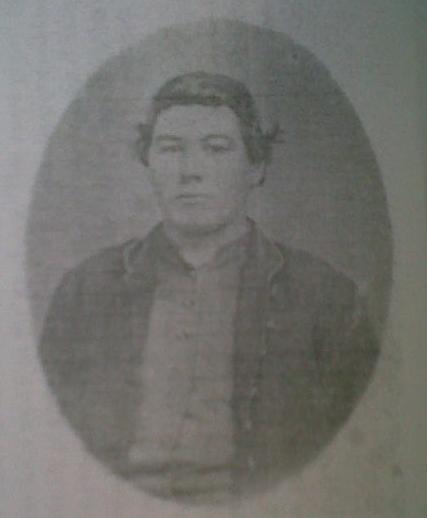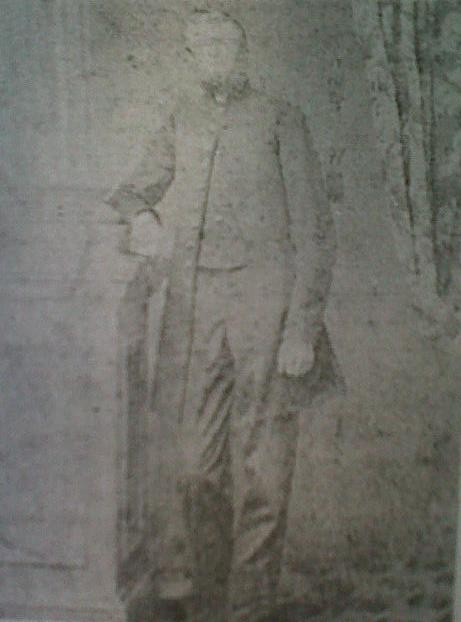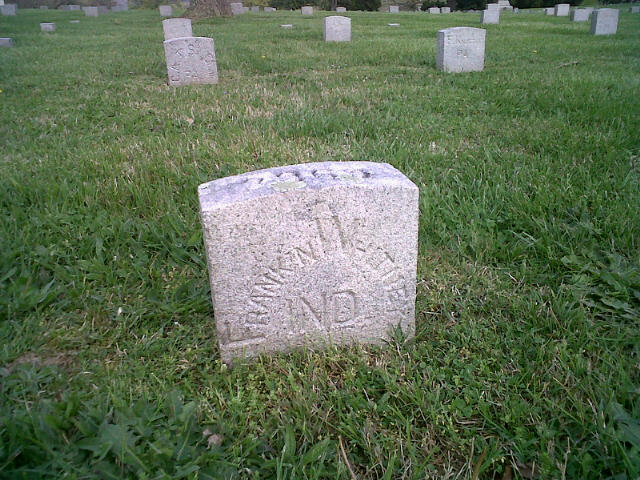Secrets of a Cemetery, Part V: A Brother's War
/Read the rest of the series here.
The Civil War is often called a war of brother against brother. Imagery of American fighting American and family fighting family during the war arouse sentiment of sadness and horror at the thought of families ripped apart by war. While there are instances of family members fighting on opposite sides of the conflict, more often family members were fighting side-by-side for the same army. Recruitment within towns and counties meant brothers, fathers, sons, uncles, cousins, and close friends often ended up in the same regiments, or fought in different units at the same time. As a consequence, many families faced multiple tragedies during the war.
Three brothers from the Hitchcock family in Millville, Wisconsin enlisted together in the 7th WI in August 1861. Eli Hitchcock died of disease at Potomac Creek on May 16, 1862; his brother Stambury wrote home bitterly about the lack of care Eli received before his death. Stambury himself was a casualty of war, first injured in the ankle at South Mountain in 1863 and then killed at Laurel Hill (Spotsylvania) on May 10, 1864. Chant was captured at Gettysburg and severely wounded at the Wilderness, but was the only brother to return. While Eli’s name and information is on the gravestone of grave #3028, it is possible that Stambury is actually buried there. Stambury was originally buried at Sanford’s Farm near Spotsylvania, but it was reported to the family that he was reburied at the National Cemetery; there were no such reports for Eli. Whether Eli or Stambury is buried in the Hitchcock grave, it is very likely that the other also lies in the National Cemetery, although in an unknown grave.
The Whitney family also lost two out of three brothers. Franklin Whitney, now buried in grave #3969, was killed at Laurel Hill on May 9, 1864. David was wounded at the Wilderness, later captured at Weldon Railroad, and died in prison at Sailsbury, NC in January 1865. Mordecai was discharged because of disability in 1862 and was the only one to survive the war. Double tragedy for the Johnston family was delayed until after the war. Charles C. Johnston (grave #4887) was killed in action at Laurel Hill on May 8, 1864, but his brothers Edward and James both survived the war. Edward lost his right arm as a result of wounds received at Petersburg, VA during a June 18, 1864 charge, but survived. Teenager James was honorably discharged after two years of service by reason of disease he had contracted during the war; he died soon after the end of the war as a result of this disease.
The Stevens family was a bit more fortunate. Oldest brother David and youngest brother Frank enlisted in the 42st PA and middle brother William was the chaplain of the 148th PA. David was killed May 8, 1864 at Spotsylvania when he stopped to help a squad of men having trouble with a prisoner. When he ordered the prisoner to behave the man picked up a rifle and shot him. The rest of the guard beat the prisoner to death with the rifle, but it was too late for Stevens. They carried him to the rear on his blanket and laid him under a pine tree where his brother Frank found him the next day. Both Frank and William attended to the burial of their brother (he is now buried in grave #3205A), and both survived the war.
Brothers were not the only ones who fought together during the war. A regimental account of the 17th Vermont’s fight at the Wilderness reads:
In the fighting around the Brock-Plank roads intersection had been a father and two sons from a family with its roots in Stowe. The father was shot in a leg on May 5 and died 11 days afterward. One son came through the battle unscathed. His brother was hit in the chest and died on May 12. The father’s name was Samuel Allen, the surviving son was Ethan Allen, the dead son Ira Allen.
Father Samuel is buried in grave #2194 at the National Cemetery; Ira is buried elsewhere in the cemetery.
Besides family members, close friends and comrades fought together. Sometimes created as civilians and other times formed during service, these friendships created a “brotherhood” in war. Samuel B. Wilson and Dave Hutchinson were best friends in their Pennsylvania town. They were so close their neighbors said “If Davy gets his feet wet, Sam’s sure to take a cold.” They enlisted in the 100th PA together in February 1864 even though they were both underage and tragedy befell both boys at Spotsylvania. Sam was killed in action on May 12, 1864 and now lies in grave #1177 at the National Cemetery. Dave was captured in the same battle and died in November from starvation. The bonds of these friendships remained strong even as the war slipped farther and farther into past memories. On Memorial Day 1931 a single rose was laid on grave #3247, the grave of Hiram Lare, on behalf of ninety year old veteran John B. Cooke. Cooke and Lare had been friends in the army, and the older Lare had looked out for his younger comrade through the trials and tribulations of military service. At Spotsylvania, Lare was killed and Cooke wounded in the leg, but Cooke refused to leave the body, begging for someone to bury his friend. For years afterwards, Cooke wondered about the fate of his friend’s body until the secretary of the US Memorial Park Commission, Major Arthur E. Wilborn, heard the story and contacted him about Lare’s burial at Fredericksburg. Being 90 years old, Cooke could not travel from his Philadelphia home, but he wrote a letter of gratitude for the information stating, “I wish it was possible for me to lay a rose on his grave on May 30 as a token of love and gratitude for him that has never died.” Thus, that Memorial Day Mrs. Amy G. Olney laid a rose on Lare’s grave during the celebrations in honor of his and Cooke’s friendship.
Agnes Allison lost perhaps the most during the Civil War. She began the war as a widow with six sons. She finished the war with only two surviving sons. Fighting at Salem Church on May 3, 1863 cost Agnes two of her sons. Twenty-three year old Alexander, 2nd lieutenant of the 96th PA was shot in the stomach, transported to a hospital at Aquia Creek, and died on May 5th a few hours after he arrived at that hospital. He was reburied in grave #6145A of the National Cemetery. His younger brother, 19 year old John, was serving under Alexander during the fighting at Salem Church. His body was never recovered from the battlefield, and he probably lies under an unknown grave somewhere in the cemetery. 1864 brought more tragedy for the Allison family. George Allison, serving with the 56th PA, was shot in the hip at the Bloody Angle on May 12, 1864, placed aboard a ship at Aquia Landing, and set to a hospital in Washington DC where he died May 23rd. Another brother, James, served with the 1st PA Cavalry until discharged after a serious fall from his horse. In 1864 he reenlisted in the 48th PA Infantry and was killed at Bethesda Church near Richmond, VA. Agnes’ community honored her family by naming the local GAR post after her sons, organizing a large funeral for her at her death in 1887, and unveiling a monument to her and her sons in 1908.
Kathleen Logothetis Thompson graduated from Siena College in May 2010 with a B.A. in History and a Certificate in Revolutionary Era Studies. She earned her M.A. in History from West Virginia University in May 2012. Her thesis “A Question of Life or Death: Suicide and Survival in the Union Army” examines wartime suicide among Union soldiers, its causes, and the reasons that army saw a relatively low suicide rate. She is currently pursuing her PhD at West Virginia University with research on mental trauma in the Civil War. In addition, Kathleen was a seasonal interpreter at Fredericksburg & Spotsylvania National Military Park from 2010-2014 and has worked on various other publications and projects.










